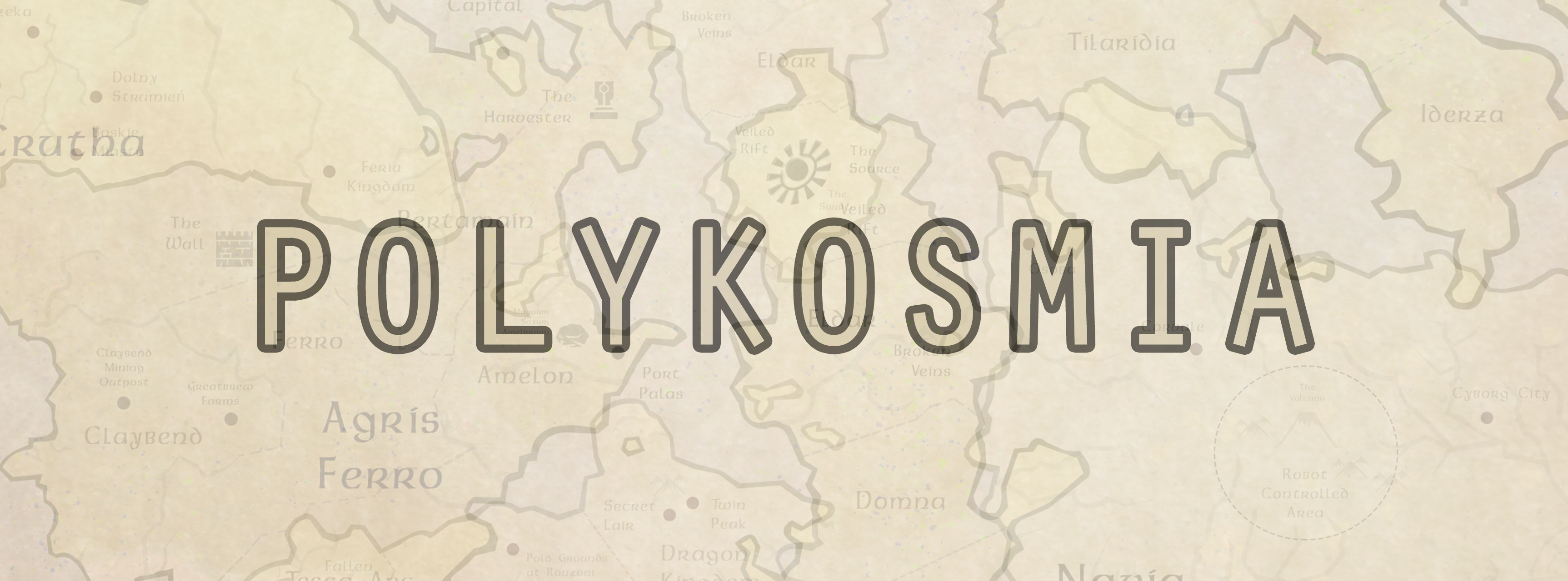POLYKOSMIA
"A chronicling of events that have forever changed the world."
Spring 2020
-------------
Polykosmia (Greek: Πολυκοσμία ; poly- "many" -kosmia "world") is the culmination of a semester-long collaborative worldbuilding and storytelling effort by University of Connecticut students enrolled in EPSY5266: Instructional Media & Game Design and DMD3522: Interactive Storytelling. Both courses are built on the principle that teaching, storytelling, and interaction design are deeply interrelated and grounded in the way we use different kinds of (trans)media storyworlds—and the social, political, economic, and cultural structures they communicate—to characterize and understand our real world.
-------------
We began with a simple concept:
A mysterious energy well-spring called
THE SOURCE
The Source, students were told, had shaped the development of life and growth in the realm of Telluria (DMD3522) for centuries. Over time, it emitted an increasingly powerful electromagnetic-like force (referred to as Magick / Power) until, three years prior to present, an enormous energy spike expanded The Source's reach and collapsed multiple dimensions of reality into a new plane of existence, Tessera (EPSY5266), containing a variety of continents torn from separate, unique storyworlds (i.e., The Convergence). Students formed groups to develop individual regions of maps, brainstormed how The Source (as well as the varied storyworld elements created by other student groups) might affect different peoples, economies, governmental structures, and sociocultural systems (e.g., education, religion, science, military), and constructed wiki entries explaining the histories of their respective regions in Telluria and Tessera.
Importantly, the 300-year timeline, energy spike, The Convergence, and other foundational components of the project were designed to serve as a living metaphor.
The Source represents humanity's technological advancement over the last three centuries, spiking in the last decade as social media and mobile devices have made it possible to communicate and understand peoples and cultures from every part of the world. The Bloody Boils (which plagued Telluria for a century) serves as a lens to consider the long-term consequences of real world current events like COVID-19. Likewise, the Tellurian continent of Navia, written by three UConn Master of Fine Arts students enrolled in both EPSY5266 and DMD3522, connects the storyworlds of Telluria and Tessera as an explicit commentary on how we—artists, teachers, instructional designers, researchers, scientists, and more—have maintained a sense of community through uncertain times using the combined powers of technology and imagination.
All this has laid the foundation for dozens of individual stories about dozens of different lived experiences from dozens of students. Some of their stories take the form of traditional teacher lesson plans, some are video games, and some are traditional texts; some explore characters, some explore environments, and some explore ideas. Taken as a whole, they form a collaborative transmedia quilt that interrogates how we use fiction to explore elements the real world (for example, putting audiences in the shoes of a particular character with a particular dark secret like Devin Quinn's Northbound, or providing a historical account of shifting political power like Joshua Hirshfield's The Children of Simone).
Please take some time to explore Polykosmia and feel free to tell your own stories with the template we've put together! If you're curious about our development process, the workflow can be found here.
-------------
Special thanks to Trent Hergenrader, John Truby, Crash Course, Lindsey Ellis, Sage Hayden, and all the other creative forces whose work formed the basis of our discussions!

